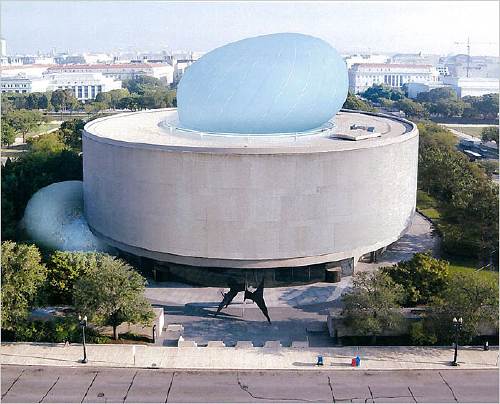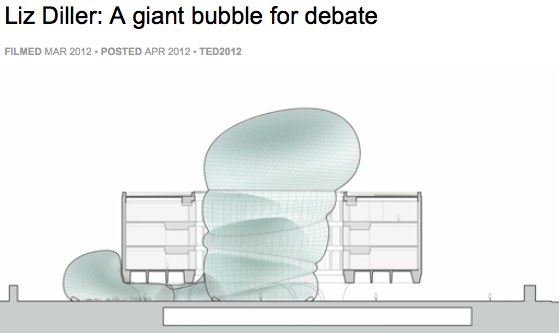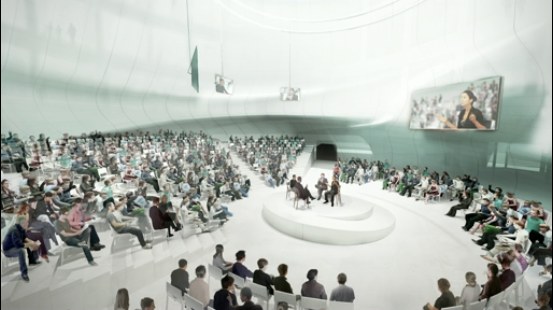
The Hirshhorn's board is scheduled to vote on whether to proceed with The Bubble, the most prominent initiative of director Richard Koshalek since he arrived at the museum in 2009.
Even though The Bubble was the subject of one of my all-time favorite posts, I have not written much about it since. I have reservations about it, but I have only wished the museum's success, and so have been willing to give the current regime the benefit of the doubt as they pursue their vision.
But that has been a vague slog, and far from a sure thing. It's remarkable that the board which hired Koshalek is apparently reluctant to support his efforts to do what they presumably hired him for: raising the profile of the Hirshhorn, and raising money for the Hirshhorn and its exhibitions, acquisitions, and educational programs.
Maybe that is because there are persistent and unaddressed issues with The Bubble and its ostensible purpose. It is true that Koshalek's stated vision for The Bubble--to host some kind of cross-disciplinary cultural forum, with content generated not by the Museum, or even the Smithsonian, but by the Council on Foreign Relations--still comes across as squishy and alarmingly unconcerned with actual art and artists. That disconnect is even more inexplicable for being unnecessary.
About The Bubble itself, though: I didn't care much either way before, but after watching Liz Diller's TED talk from March 2012, I am really starting to sour on Diller Scofidio + Renfro's design and their entire approach. Titled "A Giant Bubble for Debate," Diller's speech is the rare, unmediated, extended discussion of The Bubble by a principal. As such, it's worth a closer read.
For Diller and her client, who wants to take advantage of the Museum's unique and symbolic site "at the seat of power in America," the National Mall, "the question is, 'Is it possible, ultimately, for art to insert itself into the dialogue of national and world affairs?' and 'Could the Museum be an agent of cultural diplomacy?'" Technically that's two questions, which not only are not answered, but which beg more questions--insert itself to what end, and agent for whom?

"I blush whenever I show this," says Diller of the slide above, to laughter. "It is yours to interpret." Wait, what? So I guess she interprets this insertion into the Hirshhorn's hole as a phallus? Or given the material, I guess it could be a sex toy, or a condom? Or at least some flavor of kink, given the "study of some bondage techniques" that went into the tension cable design on the next slide?
Diller continues: "We were asked by the bureaucracy at the Mall, 'How long would it take to install?' And we said, 'The first erection will take one week.'" And if it lasts longer than that, I guess, call your architect.

Diller shows the interior space of The Bubble in use, with renderings of a panel discussion in the round; a spotlit performer; a movie screening; and a Barbara Kruger-style text projection. In every instance, the activity is the same: an audience sits and watches something happen. This "breath of democracy" turns out to be just more entertainment and spectacle. And this purportedly transgressive, iconoclastic structure does absolutely nothing to change or challenge the programs of the Mall's museums Diller just criticized, or by extension, the structures of power she pretends to subvert.
Diller's claim that her structure, built to house extravagantly ticketed events like TED, the WEF, and CFR fora, will somehow embody "the ideals of participatory democracy" is obviously nothing but hot air.
Which is still just part of the problem, seeing as how the ideals The Bubble is embodying are those of pay-to-play capitalism. More on that in the next post.












